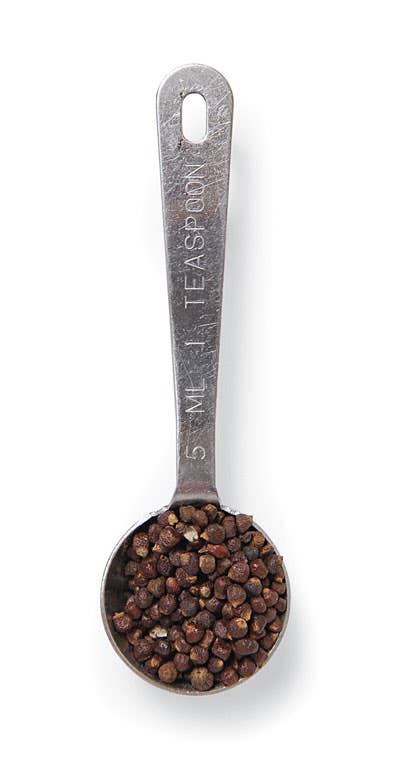
Grains of Paradise
This little-known West African spice enhances the flavor of everything from marinades to mulled wine.
Some foods have a lot to live up to. Take grains of paradise, a little-known cousin of cardamom. With a name like that, this spice had better be good. Well, as we found out while experimenting with different kinds of cardamom for the recipes in Queen of Spices (see ** Queen of Spices**), it is. Native to West Africa, the black spice, sold as dried seeds the size of peppercorns, has an understated potency, delivering an edge-of-the-tongue heat that calls to mind black pepper. But it also has a bright eucalyptus note that hints at its shared lineage with cardamom. Belonging to the species Aframomum melegueta, the spice is used extensively in Ethiopia, Morocco, and West Africa. It was introduced to Europe in the Middle Ages and became fashionable there for a while, taking its place in the pantheon of exotic spices along with cinnamon, ginger, cardamom, and black pepper. Today it is harvested in Nigeria, Ghana, and Liberia, and it's a key ingredient in a number of West African and North African preparations, including ras el hanout, a spice blend used in Moroccan dishes. Crushed with other whole spices like coriander and a little citrus zest, it makes a delicious seasoning for grilled or roasted fish, and it tastes great in mulled wine, gingerbread, and molasses cookies.
Keep Reading
Continue to Next Story










